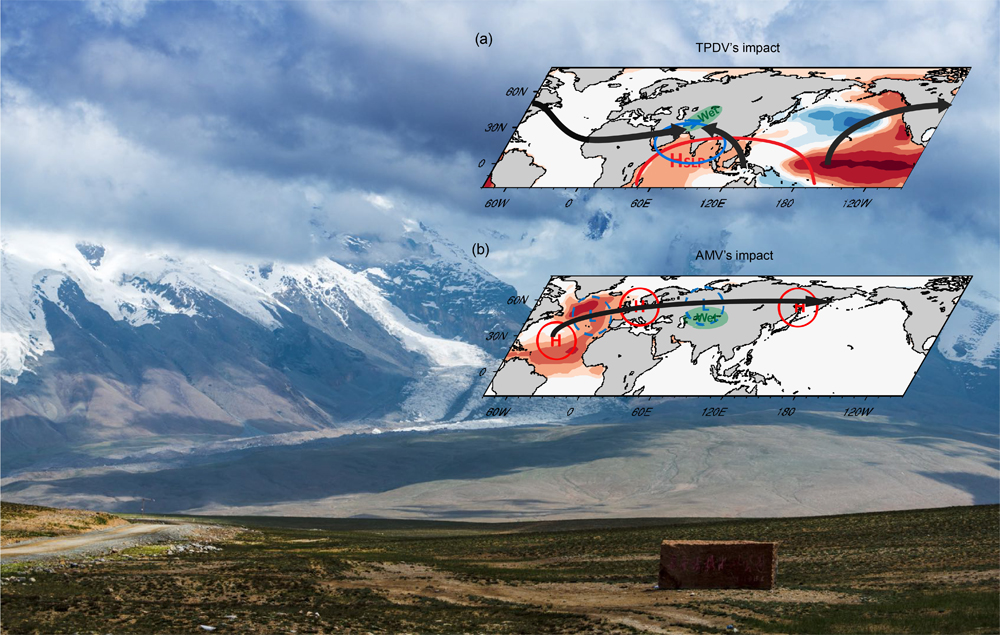As one of the major food-producing regions in the world, the agricultural production in Central Asia relies heavily on climate conditions, especially the precipitation anomalies. Thus, understanding the reasons for historical changes in Central Asian precipitation is crucial as a prerequisite for predicting the precipitation changes in next few decades. However, the effort devoted to the long-term and decadal variations in precipitation over Central Asia is quite limited due to the lack of reliable long-term observational precipitation records.
In a recently published research article in
Journal of Climate, scientists from the Institute of Atmospheric Physics, Chinese Academy of Sciences, indicated that the tropical Pacific decadal variability (TPDV) and the Atlantic multidecadal variability (AMV) are the main drivers of the interdecadal variability in Central Asian precipitation.
The researchers found that both the decadal-scale warming over the tropical Pacific and North Atlantic are favorable for wetter conditions over Central Asia. During the positive phase of TPDV (warm tropical Pacific), the sea surface temperature (SST) anomalies over tropical Pacific can lead to more precipitation over Central Asia, especially the southern and southeastern region, by modulating the atmospheric circulation at both upper- and low-levels. The warm phase of AMV (warm North Atlantic) can excite a circumglobal teleconnection pattern and favors precipitation over Central Asia, especially the northern part.
Researchers obtained these results based on the pacemaker experiments of two coupled models (CESM1.2 and MRI-ESM2-0). "Precipitation records are reliable after the 1950s over Central Asia. During the short period (~60years), it's hard to identify and isolate the contributions of TPDV and AMV as the SST-related signals in observation may be obscured by the other one," Dr. JIANG Jie, the first author of the study, explained. "The pacemaker-coupled historical experiments restored observed SST anomalies in specific basins, which help to understand the remote impact of SST anomalies in Pacific or Atlantic."
Schematic diagram of the effect of tropical Pacific decadal variability and the Atlantic multidecadal variability on Central Asian precipitation. (Diagram by Jiang Jie, background photo taken by ZHOU Tianjun)
Based on the observational TPDV and AMV indices, the researchers reasonably reconstruct the historical precipitation over Central Asia. "Different phase combinations of TPDV and AMV can result in different precipitation conditions over Central Asia. Our findings provide implications for the near-term projection of precipitation over this region," JIANG emphasized.
###
This work is supported by the National Natural Sciences Foundation of China and the Chinese Academy of Sciences.
Reference:
Jiang, J., Zhou, T., Chen, X., & Wu, B. (2021). Central Asian Precipitation Shaped by the Tropical Pacific Decadal Variability and the Atlantic Multidecadal Variability. Journal of Climate, 34(18). https://doi.org/10.1175/JCLI-D-20-0905.1.
Media contact: Ms. LIN Zheng, jennylin@mail.iap.ac.cn

